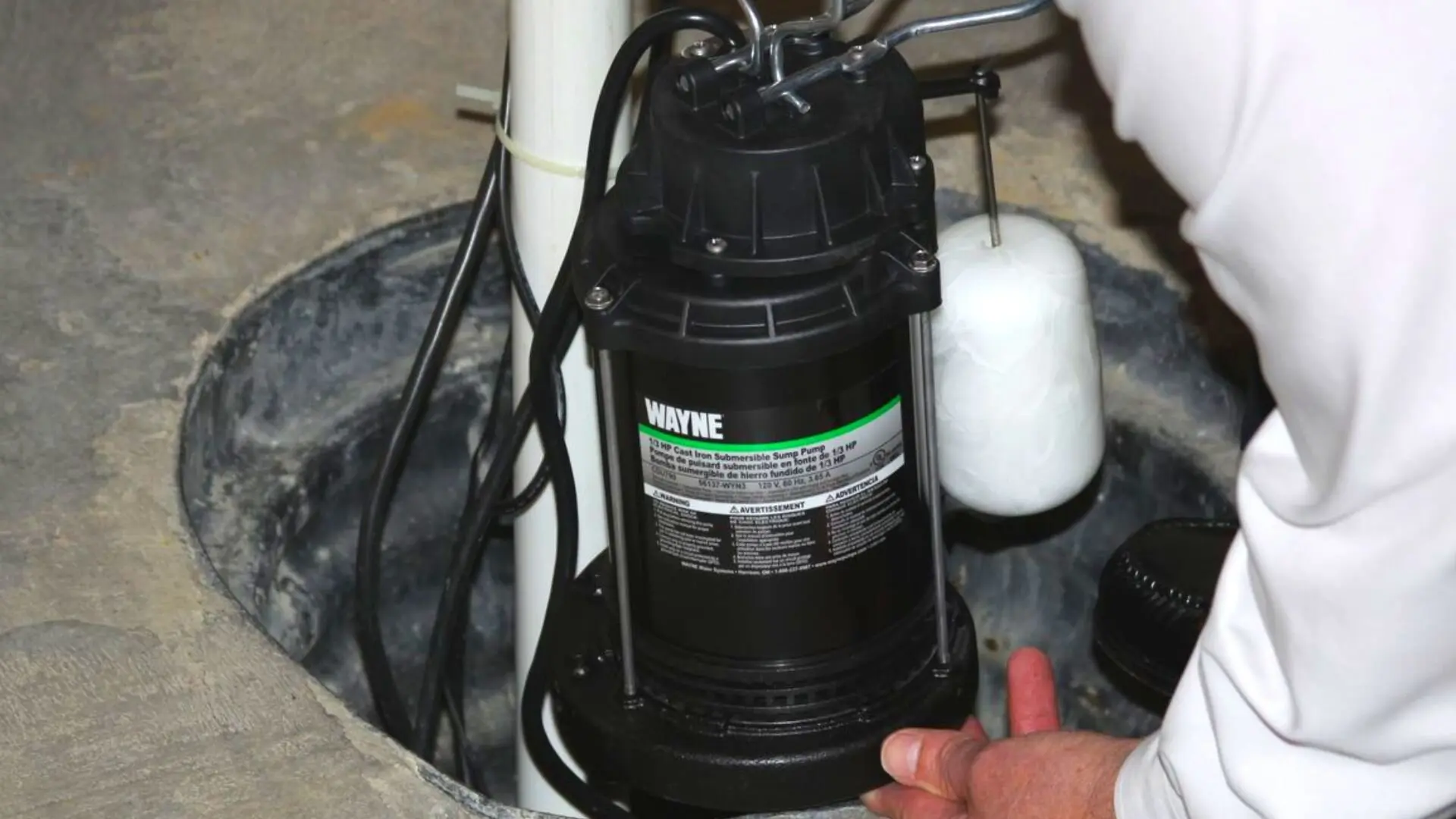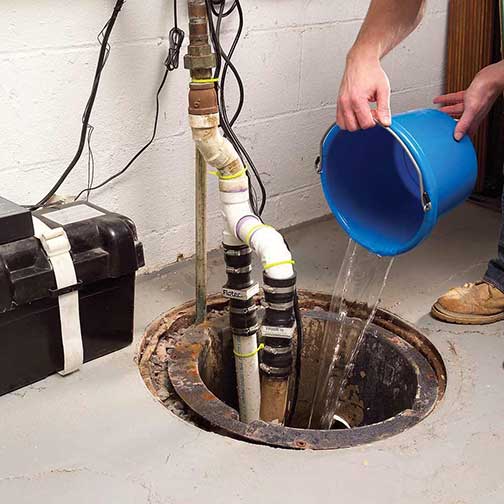Straightforward Methods to Keep a Sump Pump
Straightforward Methods to Keep a Sump Pump
Blog Article
Any individual has their own individual opinion about Keep Your Sump Pump Clean, It'll Keep You Dry.

Sump pumps are vital elements in lots of homes, specifically in locations vulnerable to flooding or excessive dampness. They assist prevent water damages by efficiently removing excess water from cellars or crawl spaces. Nonetheless, like any other device, sump pumps need regular upkeep to ensure they function properly when needed one of the most. Cleansing your sump pump is a crucial part of its maintenance, and understanding exactly how to do it correctly can conserve you from costly fixings and possible disasters.
Introduction
Maintaining a clean sump pump is essential for its proper performance and longevity. Disregarding this crucial job can cause obstructions, malfunctions, and ultimately, water damage to your residential property. Therefore, discovering how to clean up a sump pump is critical for house owners who rely upon these tools to keep their cellars dry and protected.
Signs of a Dirty Sump Pump
Recognizing when your sump pump needs cleaning is essential for avoiding prospective breakdowns. Some usual indicators that show an unclean sump pump consist of unusual sounds during procedure, decreased water circulation, and noticeable particles in the pit. If you notice any one of these signs and symptoms, it's vital to clean your sump pump quickly to stay clear of any more concerns.
Planning for Cleansing
Prior to you start cleaning your sump pump, it's important to take some safety and security precautions. Beginning by turning off the power to the pump to avoid any type of electrical accidents. Furthermore, use appropriate safety gear, such as handwear covers and safety glasses, to safeguard on your own from dust, debris, and possible microorganisms.
Comprehending the Sump Pump
Before diving into the cleansing process, it's essential to have a basic understanding of how a sump pump functions. Commonly installed in a pit or container below the basement floor, a sump pump includes a number of crucial parts, including a pump, a float button, and a discharge pipeline. When water collects in the pit, the float switch triggers the pump, which then pumps the water out through the discharge pipe, away from the building's structure.
Detailed Guide to Cleaning a Sump Pump
Shutting Off the Power
Begin by detaching the power supply to the sump pump to avoid any crashes while cleaning.
Checking for Appropriate Functioning
Before reinstalling the pump, perform a quick test to ensure that the float switch turns on the pump properly. Put some water into the sump pit and observe the pump's operation. If every little thing is operating properly, you can reassemble the pump and reconnect the power supply.
Getting Rid Of Particles and Dust
Make use of a pail or an inside story to eliminate any kind of noticeable debris, dust, or debris from the sump pit. Dispose of the debris properly to prevent it from clogging the pump or the discharge pipe.
Cleansing the Pump and Drift Switch Over
When the pit is clear of debris, carefully remove the pump from the pit. Check the pump and the float switch for any indicators of damage or wear. Make use of a soft brush or towel to cleanse the surfaces and eliminate any collected crud.
Flushing the System
After cleaning the pump and float button, flush the sump pit with tidy water to eliminate any continuing to be dirt or debris. This will assist make certain that the pump operates smoothly and effectively.
Maintenance Tips to Keep Your Sump Pump Clean
Along with routine cleansing, there are numerous maintenance ideas you can comply with to keep your sump pump in optimum problem:
Verdict
Cleaning your sump pump is an essential element of its maintenance and guarantees that it operates efficiently when you require it one of the most. By adhering to the actions described in this overview and incorporating regular maintenance into your routine, you can extend the life-span of your sump pump and safeguard your home from water damages.
6 STEPS ON HOW TO CLEAN A SUMP PUMP PROPERLY
UNDERSTANDING SUMP PUMPS
Your sump pump plays a crucial role in protecting your home by managing and removing excess water. It primarily functions as a “shield”, guarding your basement against the damaging effects of water accumulation. The pump is housed in a sump pit in the lowest part of your basement, and its job is to pump out any water that collects there.
During heavy rainfalls or when snow melts rapidly, water can infiltrate your basement, posing potential risks like flooding, structural damage, and harmful mold growth. Here, the sump pump springs into action, pumping out the intruding water and directing it away from your home.
SAFETY FIRST
Before cleaning, remember to prioritize safety. Disconnect the sump pump from the power source to prevent any accidental electric shocks. Also, wear sturdy gloves to protect your hands from any sharp or dirty components within the pump.
REMOVE THE SUMP PUMP
After ensuring your safety, the next step is to remove the sump pump from its pit. Doing this might require careful maneuvering as you don’t want to damage any pump components. Once removed, clean the sump pit to remove any accumulated debris or sludge.
INSPECT THE PUMP
Inspect the pump for any visible signs of wear or damage. Check the power cord, float switch, and impeller housing. If any components look worn out or damaged, consider replacing them to ensure optimal performance.
CLEAN THE PUMP
Thoroughly clean the pump with warm, soapy water. Make sure to rid it of any dirt, gravel, or other debris that might impede its performance. You can use a toothbrush to clean the small, hard-to-reach parts of the pump.
REINSTALL THE SUMP PUMP
Reinstall the pump into the sump pit Make sure it’s positioned correctly to remove the water effectively Once it’s back in place, reconnect it to the power source TEST THE PUMP
Finally, pour some water into the pit to ensure the pump works correctly. It should start automatically and begin pumping out the water; if it doesn’t, check the power source and the positioning of the pump.
Remember, while cleaning your sump pump is an essential part of home maintenance, hiring a professional plumber for a thorough inspection and cleaning at least once a year is also important. This will ensure that your pump is in optimal condition, ready to protect your home from potential water damage.
BEST PRACTICES FOR CLEANING SUMP PUMP DISCHARGE PIPES
Regular Inspection: Regularly inspect your discharge pipes, especially during heavy rainfall or snowmelt periods. Look for any signs of blockage or damage. Early detection of problems can prevent serious issues down the line. Periodic Cleaning: Over time, sediment and debris can accumulate in the discharge pipes, impeding the flow of water. Regular cleaning helps keep the pipes clear and functioning efficiently. You can use a high-pressure water jet to effectively clean the pipes. Insulation During Winter: In colder climates, discharge pipes can freeze, blocking the outflow of water. Protect your discharge pipes from freezing temperatures by insulating them with foam pipe insulation. This will ensure the sump pump can continue to discharge water even in freezing conditions. Proper Positioning: The discharge pipe should be positioned to direct water away from your home’s foundation. Improper positioning can lead to water seeping back into the basement. Ensure the pipe is long enough and angled correctly. Installation of a Check Valve: A check valve prevents water from flowing back into your sump pit after the pump has pushed it out. Installing a check valve helps maintain the efficiency of your sump pump and reduces the risk of flooding. Minimize Pipe Turns: Every curve or turn in the discharge pipe can decrease the efficiency of water flow. By minimizing turns and bends in your discharge pipe, you can increase the efficiency of your sump pump. https://www.fullspeedplumbing.com/how-to-clean-a-sump-pump-properly9999/

I discovered that blog entry about How To Effectively Clean A Sump Pump while looking around the search engines. Sharing is good. One never knows, you may very well be helping someone out. Many thanks for taking the time to read it.
Book-Now Report this page